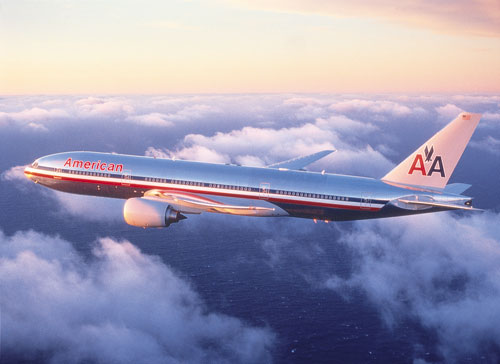
1. ON THE ROAD
Since Sept. 11, Years of Change for Airlines
A LOT of frequent flier miles have been piling up in the 10 years since the terrorist attacks brought the
Airlines in the United States lost $55 billion and shed 160,000 jobs during that decade. But the industry has worked through the economic tumult. A decade later, the system is smaller in terms of capacity, but it’s still in good working order. Last year, for example, 720.4 million people boarded airplanes in the United States, slightly higher even than the 719.1 million passengers in 2000.
Two weeks ago, at the annual convention of the Global Business Travel Association in Denver, Michael W. McCormick, the executive director of the group, hinted at a recovery.
“We’re not seeing record profits, but we’re also not seeing the end of airline travel as we know it,” he said. “So have things changed for the better?”
Good question. Planes are more crowded than ever, but fares remain near historically low levels. Other than the airport security challenges, however, the one major difference from 10 years ago is all the extra fees airlines have added to base fares, charging for things that used to be part of the ticket price.
Last year, for example, domestic airlines raised $3.4 billion just from charges for checked bags. In 2007, the year before most airlines started charging extra for checking a bag, the comparable figure was $464.2 million.
2. Same jet, same firm in three accidents
Third Embraer 145 aircraft to overshoot Ottawa runway while landing in the rain
The United Express plane that slid into a field Sunday was the third Embraer 145 jet from the same company, Trans States Airlines, to overshoot the runway at Ottawa International Airport while attempting to land during rain.
Trans States Airlines is a regional carrier headquartered in Bridgeton, Missouri, that operates as United Express for United Airlines and US Airways Express for US Airways.
A 2008 Transport Canada report obtained by The Citizen indicated grooved runways and equipping planes with thrust-reverse engines can significantly reduce the risk of aircraft overshooting a wet runway.
The runway surface at the Ottawa airport isn't grooved, nor is the Embraer 145 equipped with thrust-reversers.
The report contained data gathered from accidents between 1990 and 2007 that indicated the risk of an accident by overshooting the runway is about seven times higher when the runway is wet. The rate in Canada is six times higher than the rate in the United States, while it is only three times higher for other countries.
The report indicated that landing on grooved runways, in which the tarmac is divided by perpendicular slats across the runway, or runways with a porous surface, can provide traction to reduce hydroplaning.
"Runways are either grooved or have (porous friction course) overlay at almost all airports with commercial jet service in the U.S., U.K., Australia and Japan, at most major airports in continental Europe, and at many of the major airports in other countries," the report said. But only two of Canada's airports had grooved runways in 2008, and both of those were small regional airports, the report said. An Ottawa airport spokeswoman confirmed Monday that the runways there are not grooved.
In addition to grooved runways to increase friction, the report recommended the use of airlines equipped with reverse thrust engines, to rapidly reduce speed, which can help avoid hydroplaning.
"The risks of landing overruns on wet runways for aircraft without reverse thrust are approximately six times greater than for aircraft with reverse thrust," the report said.
In 2004, after the first Trans States Airlines plane overshot the runway, the operator's fleet had 22 aircraft with thrust reversers, and 17 without. The plane on Sunday was also without thrust reversers.
On July 14, 2004, around 5 p.m., a US Airways Express Embraer 145 flight from Pittsburgh was attempting to land at the Ottawa airport during a light rain. It overshot the runway, stopping about 300 feet from the end, in a field. None of the 31 people on board the plane were injured.
The Transportation Safety Board (TSB) investigation report determined that the plane was not equipped with reverse thrusters, and the runway at the Ottawa airport was not grooved. However, the report attributed the accident to human error and a faulty brake system.
Then, on June 16, 2010, a United Express flight, also owned by Trans State Airlines, was arriving from Washington when it skidded off the runway while landing in the rain. The crash left the plane nose-down 150 metres past the runway's end in the airport's southern field. Three people - the pilot, co-pilot and an elderly woman - were taken to hospital with minor injuries.
The TSB has not yet produced its final report for that incident, said Chris Krepski, a spokesman for the board. But if urgent recommendations are needed, they would have been communicated to the airport. To date none have been made.
Aviation NEWS By
Neha Jain
Aviation NEWS Reporter
Neha Jain
Aviation NEWS Reporter
Best links | Airlines Links | Aviation links | World's Best links |AeroSoft Corp |Best Aviation KPO & Link Exchange | Best in India & Finest in Asia
www.aerosoftcorp.co.in
www.aerosoftcorp.co.in
Welcome To AeroSoft Corp| Best Aviation SEO Services | Jobs for Freshers | Jobs in Asia |Best In India | Finest In Asia | Professional pilot Jobs
www.aerosoftorg.in
www.aerosoftorg.in






No comments:
Post a Comment